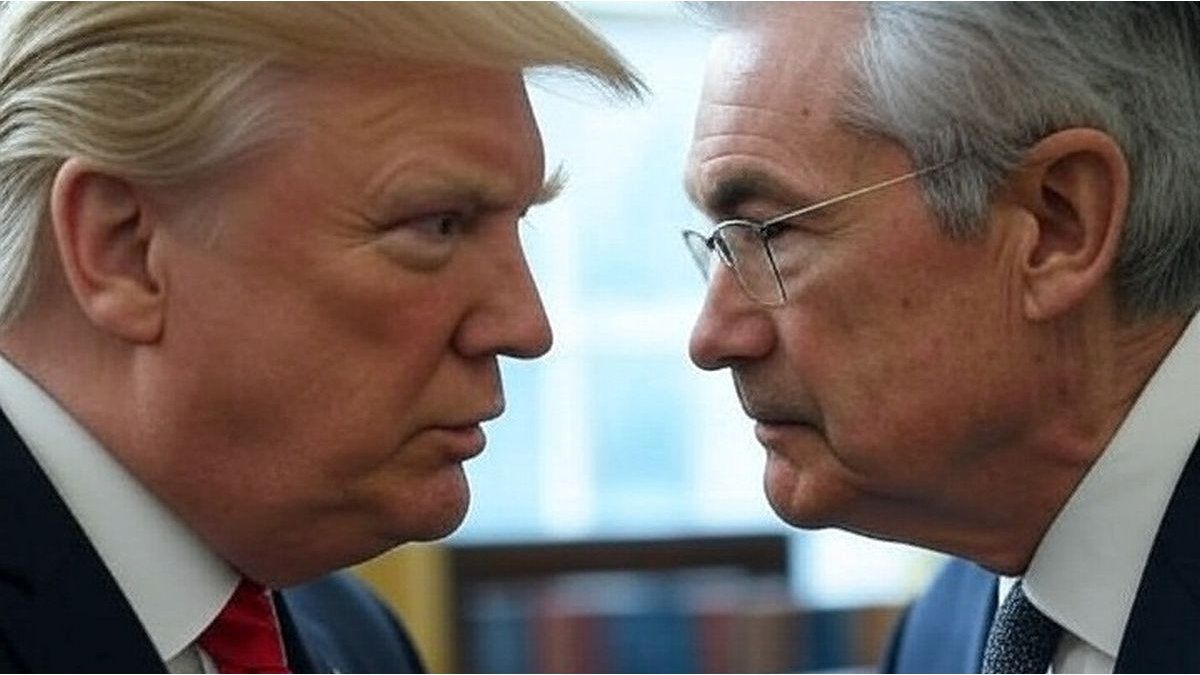“Our work is to ensure that a specific increase in inflation does not become an inflationary problem,” Powell said. Under the surface, there is a discussion in crescendo in the Fed that is preparing to take public condition.
The Fed concluded its fourth meeting of the year and resolved, as in all the previous ones, maintain its interest rates without changes. There were no surprises. The decision was unanimous. At first glance nothing was modified. However, procession and dissent march inside. The official points map – which is the closest thing to a tentative roadmap – shows two rate cuts (a quarter quarter) before the end of 2025. The same as its previous version, published in March. But if you investigate the economic projections that support you, the reviews are important and are not exempt from controversy. Under the surface, an in crescendo discussion is appreciated that is preparing to take public condition.
The content you want to access is exclusive to subscribers.
The Central Bank took three tenths to the expected growth of GDP and joined their inflation forecast. That the price rise has diminished so far this year, and Trump retreated with reciprocal tariffs, did not calm his concern. “We expect a significant increase in inflation in the coming months”Said the Chairman, Jay Powell. In fact, and for “Tariff’s fault”the Fed predicts that the consumer deflator (2.1% in April) will climb to 3% at the end of December. “See and wait” is the (in) action line promoted by Powell from the January rally. At least until knowing the size of the account for sure and who will pay it. That Trump demands a violent and urgent cuts of rates – which carries them from 4.50% to 2% or 2.5% – is without care. “Our work is to ensure that a specific increase in inflation does not become an inflationary problem.”


Not everyone participates in that idea. Trump, since no. Within the same Fed, they all share the diagnosis or continuity of the recommendation. Powell warned him without citing names. “We have a quite healthy diversity of opinions in the Committee (open market operations), people can look at the same data and evaluate risks differently.” It is so. Two days after the meeting, Governor Chris Waller informed his discrepancy with the motion to “see and wait”. See, it was already enough. And you can’t expect anymore. The loss of rates should start at the next meeting, at the end of July. And, so that there are no doubt, he advanced his vote in that sense. Although no one else accompanies him, he said. It is the announced purpose of unanimity within the Fed. In three weeks, the minutes of the meeting will record the different positions under discussion.
A Fed in the shadows?
Is monetary policy politicized? Waller knew how to be a hawk when the Fed raised the tasks in 2022. And now it is the first voice that advocates to start the loss of rates and, in that way, who first is coupled with Trump’s preaching. The president was the one who proposed it to integrate the Board of Governors in December 2020. His mandate expires in 2030. Jay Powell’s at the head of the Central Bank, in May 2026. Trump has already said that he will not renew it. And also that he will soon nominate his replacement. Powell doesn’t plan to leave early. The idea, then, would seem to be in parallel a fed in the shadows. With a designated chairman suggesting lines of action in the waiting room. Flippant. Maybe for that reason, plausible. Much more considering the frustration of the president in this field and his repeated tantrums. It is a speculation that Scott Besent, the current secretary of the Treasury, ventilated last year in a report published in Barron´s, although he later dismissed it. The idea is then in the toolbox.
Does Waller aspire to happen to Powell? Presumably, yes. The markets place him in a hypothetical list that also includes former governor Kevin Warsh and Besent himself. Waller is the strongest candidate of the three, by far. He worked more than ten years as a research economist in the Fed of St Louis. And landed five at the Board. His statements – specially, his assertive tone – are typical of a chairman. For the sake of the institution it will be convenient, yes, to cultivate a profile that differentiates that of a virtual Trojan horse or a puppet of the White House.
Tariffs and impact on prices
Is monetary policy politicized? The answer, until now, is no. Waller puts solid arguments on the table. “The tariffs are not going to cause persistent inflation. The Fed was in pause for six months waiting for an inflationary shock that has not arrived.” Indeed, consumer inflation sank half a point so far from 2025. It went from 2.9% year -on -year in December to 2.4% in May. Powell sees a significant rise in the coming months, Waller dismisses it. “Tariffs will not be completely moved at prices; a 10% tariff above all imports would not have much impact on general inflation.” Powell does not trust. He wants to wait for the new tariff structure to be firm. The governor disagrees. “The Fed should not wait for the collapse labor market to cut the rates.” Its situation is solid, but “signs (of weakness) are already beginning to see as a high unemployment among the newly graduated.” We would have to start down the rates, slowly, without urgencies, already at the next meeting, taking advantage of the fact that inflation is not the threat that was feared. “The Fed has room to lower the rates and then observe what happens to inflation.”
What can expect, then? Where captain commands, it does not send a sailor (even if you have ambitions). Waller’s dissent at the July meeting is a sung vote. Most likely lonely, even if your position aware sympathies. Of 19 opinions collected by the points map, ten are willing today to execute two casualties of fees (or more) before the end of the year. After July, only three meetings would subtract: September, November and December. Only seven officials are inclined to do nothing until 2026. Those who are the ones who, in addition to voice, have a vote are not recorded. But the positions will gravitate towards the decline of rates – please of Waller’s arguments – if it dates it preserves its current trend. Thus, a first cut in September stands out as the most likely scenario. By then, three great uncertainties should have been clarified: the fate of tariffs and the tax package promoted by Trump in Congress and the impact effect of war with Iran on energy prices. The usual is a strong initial overreaction that is then diluted by facilitating its rapid digestion. Instead, the adverse effect on the real economy will operate with lag.
Trump’s enigma and uncertainty
The Fed did not hesitate to lower the rates last year – a full point – with an even more uncertain panorama. It is known that it does not manage forecasts but risks. Trump 2.0 was an enigma that proved to be more corrosive than its original version. The tariff war was fierce but still did not stop the descent of inflation. His aggressiveness broke out in March and April until he found firm resistance and entered a moderation phase. On the contrary, the deceleration of the real economy and fatigue in the labor market are the risks that are growing on the margin. Monetary policy remains restrictive. Therefore, a mild cuts of rates – as Waller proposes – appears as a necessary complement in a context that, Trump through, will continue to be governed by uncertainty.
Source: Ambito




